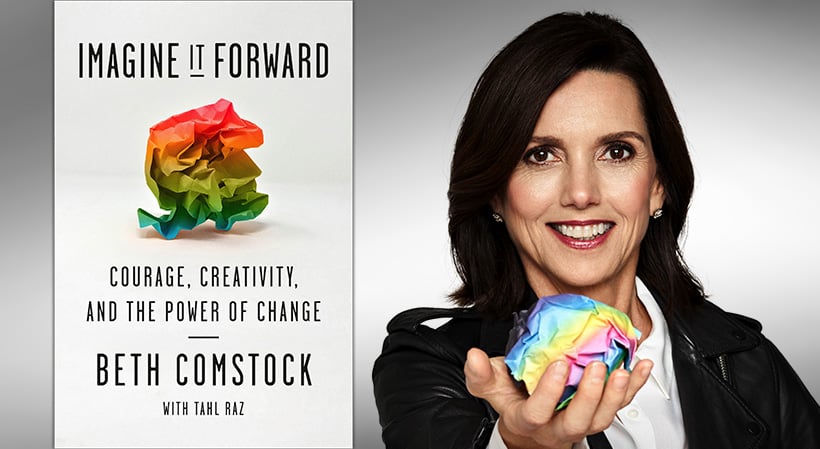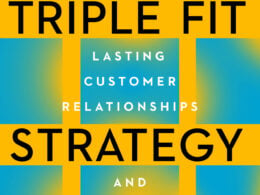The following is adapted from “Imagine it Forward: Courage, Creativity and the Power of Change” Copyright © 2018 by Beth Comstock. Published by Currency, an imprint of Penguin Random House LLC.
During my discovery pilgrimages to Silicon Valley and various “maker” spaces, I started hearing a growing buzz about lean innovation methods almost six months before Eric Ries published his book “The Lean Startup.” Eric was a software entrepreneur who, along with Steve Blank of Stanford, his former teacher, had begun to proselytize that startups could be much more successful by taking a lesson from lean manufacturing methods. They created simplified offerings called minimum viable products, or MVPs, that would elicit customer responses quickly, thus offering truly useful information to iterate the offering in what he called a “build-measure-learn” loop. When I found myself at a party for Eric’s book launch in New York, I discovered firsthand what lean startup meant, and I was intrigued. Perhaps this could help us launch more internal startups—a quest I had not given up on since launching Imagination Breakthroughs.
Building on Lean Startup was what we called “FastWorks,” a jumping-off point for adaptation across teams, function and industries. Our goal was to get more innovation faster, but also to get rid of bureaucracy and increase critical thinking across a wider part of the organization.
Related: LEAN Sprint: Move Your Business Model Forward
Here are the key steps of “Lean Startup” methodology
Name the “leap of faith” assumptions that must be true if a planned product is going to succeed
Like, say, that people will accept coffee in a capsule, or a car without a driver. This is a make- or-break question: What must be true for us to continue? What are our riskiest assumptions moving forward? Casting an issue as a HYPOTHESIS gives people a sense of relief from having to have all the answers. Can you challenge yourself to use this standard question often: What is your hypothesis?
Among the variations of leap-of-faith assumptions are the value hypothesis (Does this deliver value?) and the growth hypothesis (Will new customers discover it and buy it?).
Create minimum viable product (MVP) experiments to test those assumptions
In other words, create a rough and ready prototype that you try out on, and develop with, customers. After every one of the hundreds of training sessions we conducted, we gave teams a challenge: What are you going to test and learn when you go to work next Monday? You have to pick ONE project or activity that you think needs a different approach—maybe it’s a presentation, product feature, staff meeting. Pick something and experiment a new way.
Iterate
That means going through repeated build/test-and-learn cycles with MVPs, asking yourself what’s working and what’s not. After you validate your learning, use that information and start the loop again. That iterative cycle is called build-measure-learn.
Pivot or persevere
You continually use the feedback from the build-measure-learn cycle to assess if your efforts are working. On a regular schedule—every 15, 30, or 90 days— decide whether to pivot from or persevere with the project. It’s about adapting the vision to reflect reality. But it also means that if it didn’t work, you need to pivot to something else. What can you do that does work? We added digital tools like Survey Monkey for getting feedback, Slack for ongoing team and customer conversations, and consumer 3D printing for sharing early designs.
Beware vanity metrics
These are the numbers teams track that make us feel good and look good, but they don’t really indicate sound business traction. Think clicks on a digital ad or positive focus group feedback that doesn’t lead to engagement or sales.
Sign Up: Receive the StartupNation newsletter!
Embrace innovation accounting
This concept pushes you to think about measuring what matters most for each stage of development. We had learned this in launching the Imagination Breakthroughs, when managers expected profits and market share before the idea had even been tested by customers. The goal we strived for: learning achieved divided by money spent and re- sources committed.
It can be broken down into a few indicators:
- Number of products/projects reviewed and in what stage
- Number of project learnings versus gaps identified
- Percent of projects with clearly articulated customer value
- Time to first economic exchange, meaning someone pays something
- Number of significant pivots based on new customer insights
- Number of projects canceled and resulting money and time saved (This became a surprising hit and was a sign that FastWorks was working, as more people sought to kill ideas earlier to redeploy funding on ideas that worked)
Challenge yourself to see if any of these concepts can be adapted for your team.
“Imagine it Forward: Courage, Creativity and the Power of Change” is available now at fine booksellers and can be purchased via StartupNation.com.






